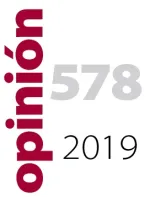Real and Virtual Threats: Europe's Vulnerability to Disinformation

The 2019 European election campaign started early in Hungary. At the end of February, Viktor Orbán’s government used billboards, press advertisements and publications on the executive’s official Facebook page to accuse the European Commission president, Jean-Claude Juncker, and the millionaire George Soros (the bogeyman in Orbán’s populist rhetoric) of conspiring to open Europe’s gates to uncontrolled immigration. Neither the message nor the individuals blamed were new but for the first time Brussels set aside its usual non-confrontational position and accused the Hungarian government of spreading fake news (a concept that has already entered both everyday vocabulary and the range of verbal weapons against any political dissent or attack). In a matter of days, the European Commission launched a counter-campaign entitled “Facts matter”, refuting Orbán's arguments one by one.
For months the European institutions had debated and planned strategies to minimise the effects of disinformation on the European Parliament elections. Over the past year, codes of practice were presented to make technological giants jointly responsible for controlling the disruptive content that multiplies via social networks. New collaboration strategies were announced between institutions and member states to establish a rapid alert system for detecting and reacting to the appearance of disinformation campaigns. And yet, the first public embarrassment came from within, from a member state government.
Disinformation is not a threat from outside. It is an internal reality. It is the consequence, not the cause, of the transformation of the European public sphere; of increasingly blurred boundaries between facts and opinions, and between external actors’ capacities to disrupt and internal actors' power to amplify. The European public sphere has become more complex, saturated by the amount of information – true or false – within reach, with more actors releasing often diverging narratives and more channels of dissemination. The political and social conversation has also grown noisier. And the growing irrelevance of factual truth in public discourse has ended up altering the democratic process of opinion-forming.
Like the European political scene, the public sphere has also fragmented and segmented. The concatenation of crises over the last decade has accelerated the Europeanisation of EU citizens. Public debate about the EU reality has increased but it has also become more uneven. Political indifference put a strain on public discussion and created the perfect conditions for anti-European narratives to break out and spread. The information may be false, but the polarisation it feeds is real. Populist support and anti-establishment feeling have been making electoral gains in a political system that has for some time felt the ground beneath it to be unstable.
The new politics of emotions that broke out, most recently, in 2016 with the Brexit victory and Donald Trump reaching the White House made the technocratic Europe, the EU of the output legitimacy, feel helpless and vulnerable. So too did the confirmation of new levels of public distrust and alternative narratives that entered the political and media debates on the Ukrainian conflict, which completely changed the relationship between the European Union and Russia. In the new EU Global Strategy presented by Federica Mogherini's External Action Service that same year, Russia ceased to be a “strategic partner” and began to be considered a “strategic challenge”.
Information and shared narratives are a precondition for the democratic public discourse that has now fragmented into silos of supposedly shared truths. Social networks opened up the public sphere to new voices, especially to those that challenged the status quo or traditionally felt under-represented in media debates. But communicating in 140 characters, which favours short, simple, emotional or surprising messages, led networks to act as echo chambers that reaffirm positions in the digital conversation. The impact of post-truth on the democratic system ushered in a post-trust feeling towards institutions, and a general distrust of all intermediaries who used to have the monopoly on the interpretation of reality. And yet, proving a causal relationship between attempts to alter public opinion and changes to citizens’ behaviour is problematic.
How should the European Union address a problem its member states perceive with differing degrees of concern, making divergent risk assessments, and taking different approaches to handling? How can they legislate against disinformation without damaging freedom of expression?
Disinformation, or better said, the strategy for facing this new reality, confronts the European Union with some of its most recurrent internal dilemmas: the differing visions of political priorities, rights and values beneath the EU umbrella. The balance between freedom of expression and the right to be properly informed is one such dilemma. The European Court of Human Rights has unequivocally stated that governments (and, by extension, the EU) cannot silence speech on the grounds that it questions official opinion, as one of the main objectives of freedom of expression is to protect minority voices in order that they may contribute to debates on issues of general interest.
For the time being, the European Union has focused mainly on promoting the responsibility of online platforms, leaving specific legislative initiatives to the member states. In the meantime, the question of why the dissemination of false information is such an attractive strategy in our current environment has yet to be answered.
Key words: Disinformation fake news, post truth, public sphere, Orbán, social networks, internet platforms, Russia, narratives
E-ISSN: 2013-4428
D.L.: B-8439-2012